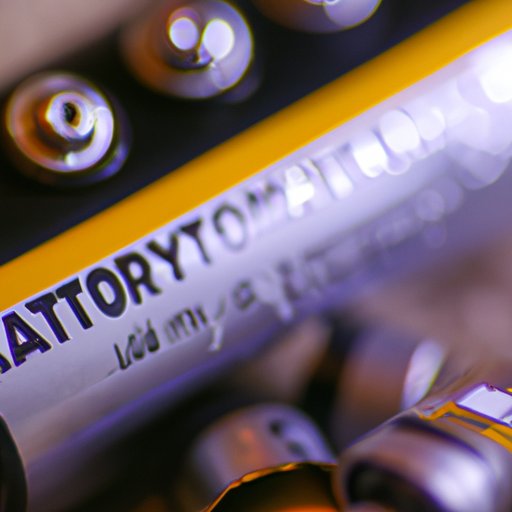Introduction
Lithium ion batteries are one of the most important components of modern technology. They are used in a variety of devices, from smartphones to electric cars, and they have revolutionized the way we use energy. But what exactly are lithium ion batteries and how do they work? This article will explore the science behind lithium ion batteries, how they make our lives easier, and the benefits and challenges associated with this technology.

Exploring the Science Behind Lithium Ion Batteries
Lithium ion batteries are rechargeable batteries that consist of two electrodes – an anode and a cathode – which are separated by an electrolyte. The anode is typically made of graphite, while the cathode is usually made of metal oxide. When the battery is charged, lithium ions move from the anode to the cathode through the electrolyte, creating an electrical current. When the battery is discharged, the lithium ions move back to the anode, releasing energy.
The chemistry of lithium ion batteries is complex, but it all boils down to the movement of lithium ions between the electrodes. When the battery is charged, lithium ions move from the anode to the cathode, creating an electrical current. When the battery is discharged, the lithium ions move back to the anode, releasing energy.
How Lithium Ion Batteries Make Our Lives Easier
The advantages of lithium ion batteries are numerous. They are lightweight and compact, making them ideal for use in portable devices such as laptops and cell phones. They are also incredibly efficient, meaning they can store more energy than other types of batteries. Furthermore, they require very little maintenance and are relatively safe, making them a popular choice for many applications.
Lithium ion batteries are used in a wide range of devices, from consumer electronics to medical equipment. They are also used in electric vehicles, providing a reliable source of power for long distances. In addition, they are used in solar energy systems, as they can store and release energy when needed.

A Comprehensive Guide to Lithium Ion Battery Technology
There are several types of lithium ion batteries, each with its own advantages and disadvantages. The most common type is the lithium cobalt oxide (LCO) battery, which is lightweight and has a high energy density. However, it is also prone to overheating and must be monitored closely for safety reasons. Other types of lithium ion batteries include lithium manganese oxide (LMO), lithium iron phosphate (LFP), and lithium nickel manganese cobalt oxide (NMC). Each type has its own set of advantages and disadvantages, so it’s important to research the different types before deciding which is best for your needs.
Lithium ion batteries consist of several components, including the electrodes, electrolytes, separator, and casing. The electrodes are responsible for storing and releasing energy, while the electrolytes provide a medium for the lithium ions to travel between the electrodes. The separator prevents the electrodes from coming into contact with each other, while the casing provides protection against physical damage. All of these components work together to make the battery function properly.

Understanding the Chemistry of Lithium Ion Batteries
Lithium ion batteries rely on the movement of lithium ions between the electrodes. The electrolyte is the medium that allows the lithium ions to travel between the electrodes. It is typically composed of organic solvents, salts, and other materials. These materials allow the lithium ions to move freely while also preventing the electrodes from coming into contact with each other.
Recharging lithium ion batteries is relatively simple. When the battery is connected to an external power source, the lithium ions move from the anode to the cathode, creating an electrical current. This current charges the battery, allowing it to be used again. It is important to note that overcharging or discharging the battery can cause permanent damage, so it is important to follow the manufacturer’s instructions when recharging the battery.
The Benefits and Challenges of Lithium Ion Batteries
Lithium ion batteries offer many advantages, including their lightweight design, high energy density, and low maintenance requirements. They are also relatively safe, making them a popular choice for many applications. However, there are also some challenges associated with lithium ion batteries. For example, they can be expensive and may not last as long as other types of batteries.
In addition, lithium ion batteries are prone to overheating if not monitored closely. Overheating can lead to permanent damage and even fire, so it is important to take proper precautions when using lithium ion batteries. Finally, lithium ion batteries are not environmentally friendly, as they contain hazardous materials that can be harmful to the environment if disposed of improperly.
Conclusion
Lithium ion batteries are an essential part of modern technology, powering everything from smartphones to electric cars. This article has explored the science behind lithium ion batteries and how they work, as well as the advantages and challenges associated with this technology. We have looked at the types of lithium ion batteries, the components that make up these batteries, and how to recharge them. Finally, we have discussed the benefits and drawbacks of lithium ion batteries.
Lithium ion batteries are an invaluable resource, and understanding how they work is essential for anyone who wants to use them effectively. With the right care and maintenance, lithium ion batteries can provide a reliable source of power for years to come.
(Note: Is this article not meeting your expectations? Do you have knowledge or insights to share? Unlock new opportunities and expand your reach by joining our authors team. Click Registration to join us and share your expertise with our readers.)
